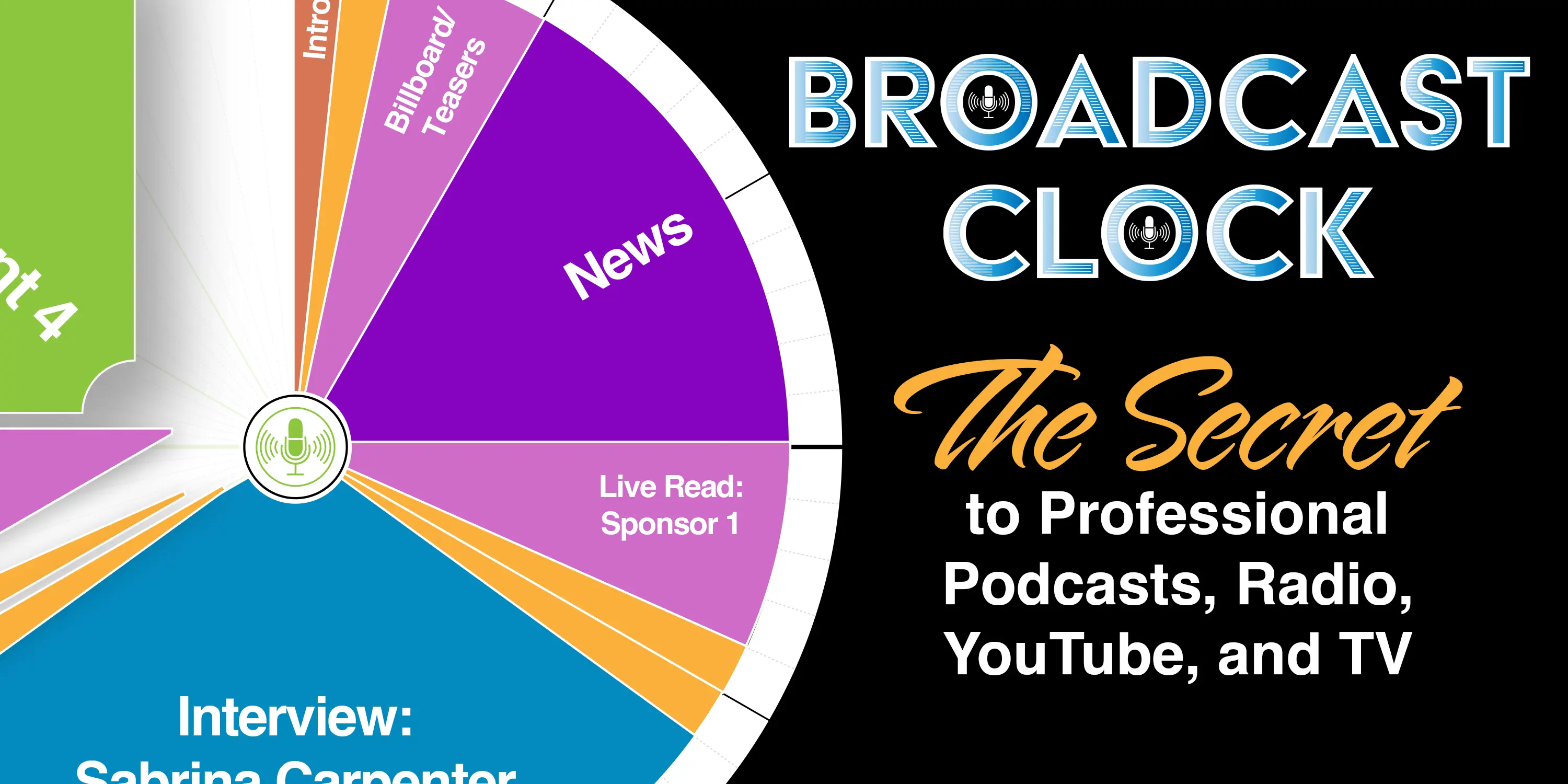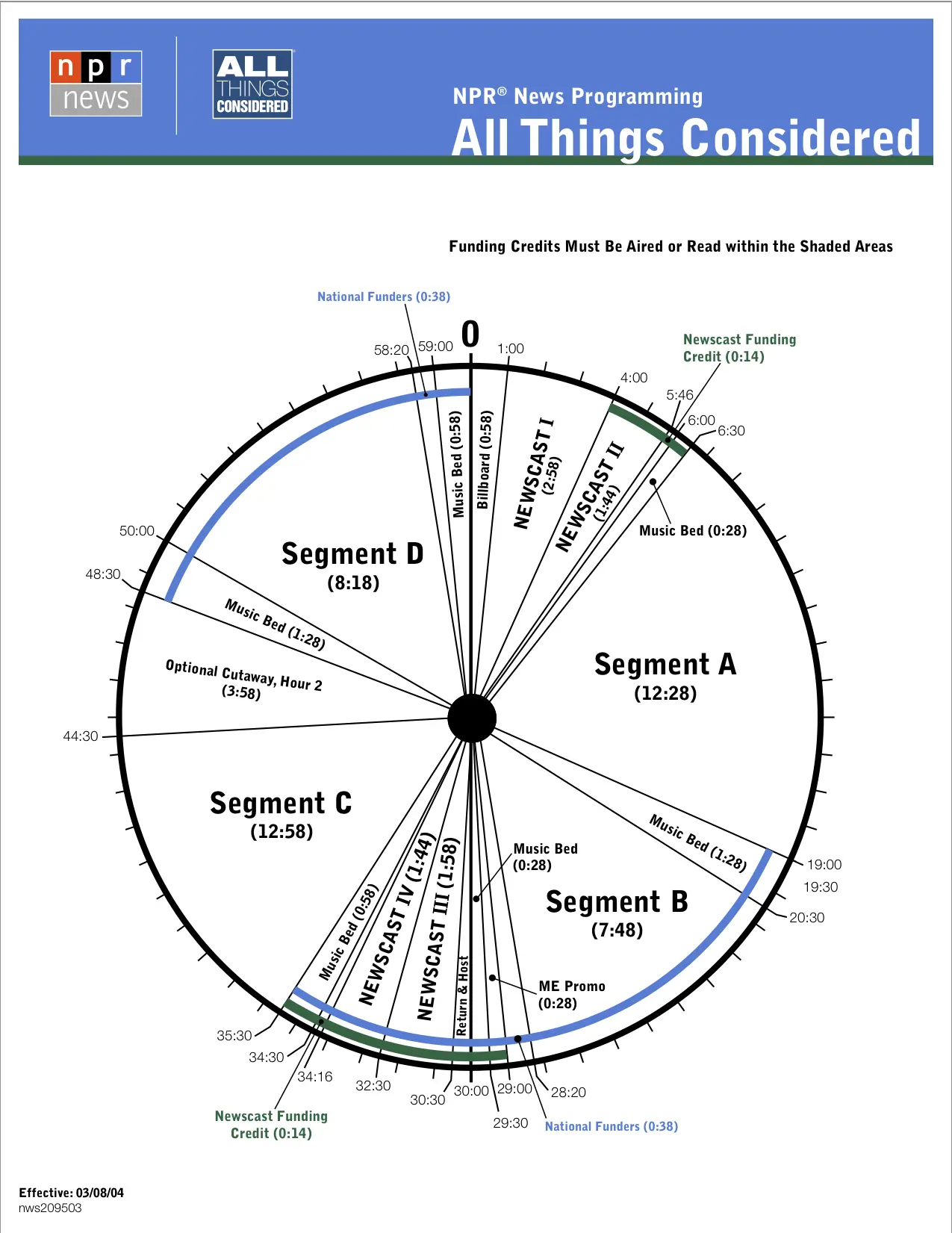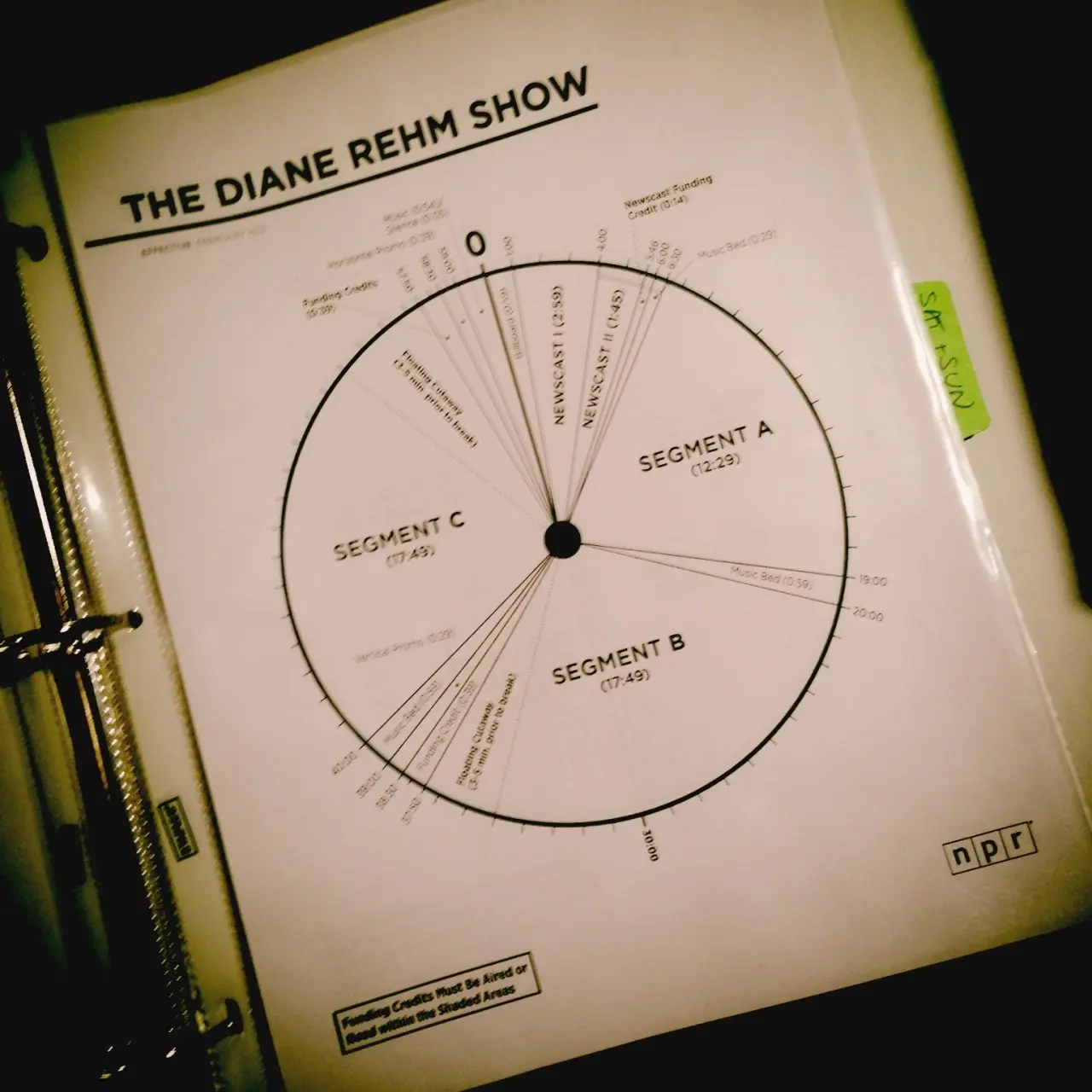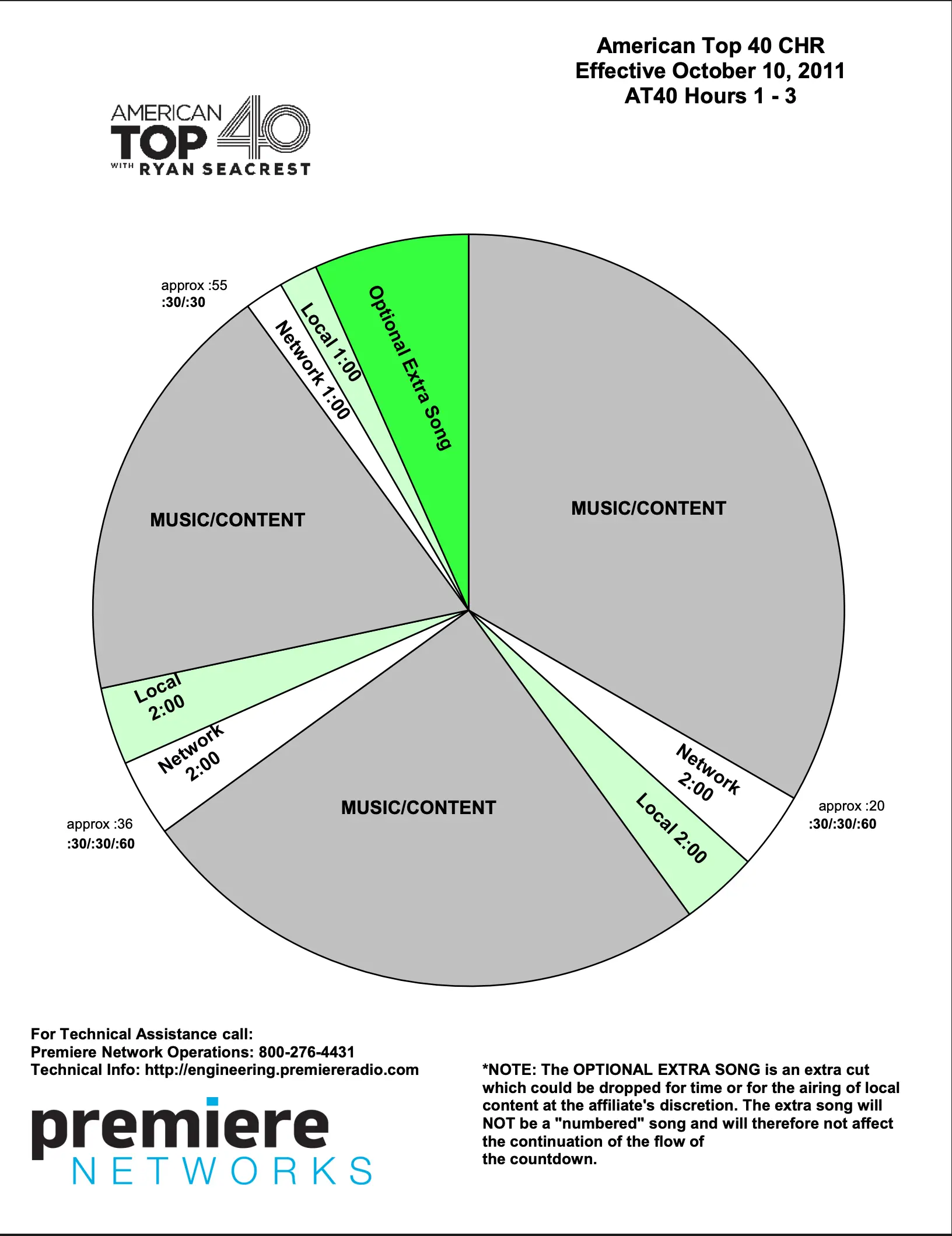2025-09-15

Ready to Elevate Your Broadcast from Amateur to Pro? The Secret is the Broadcast Clock!
In the fast-paced world of media—whether it’s traditional radio, television, booming podcasts, engaging YouTube videos, or dynamic live streams—structure and precision are paramount. What separates a rambling, unpolished broadcast from a tight, professional, and captivating one? Often, it’s a tool known by many names: the broadcast clock.
Let’s dive deep into what broadcast clocks are, why they’re non-negotiable for any serious media creator, and how they can transform your content.
What Exactly is a Broadcast Clock?
A broadcast clock, also known as a show clock, hot clock, format clock, program lineup, or rundown, is a visual, circular chart that represents a clock face. It’s a fundamental organizational tool that acts as a detailed roadmap for any audio or video program. This document outlines the precise sequence of events, their duration, and often the technical requirements for each segment of a broadcast.
Imagine it as a pie chart where each slice represents a specific segment of your show, like music, news, commercials, interviews, or station identifications (IDs). These clocks ensure that content, announcements, and advertisements fit into fixed time slots, leaving no room for dead air or unplanned silences.
For example, a typical format for a hypothetical 30-minute radio show might be structured as: :00 OPEN — :10 Stop Set — :20 Stop Set — :30 CLOSE. This simple structure helps plan segments around commercial breaks, ensuring a smooth flow.
Why Broadcast Clocks are Indispensable Across All Media
The utility of a broadcast clock extends far beyond traditional radio, impacting virtually every form of time-based media.
For Radio & Television: The Backbone of Scheduled Content
In radio, the clock is king. Professional and public radio stations use them to ensure everything is “EXACT — not one second over or under”. This is critical for backtiming to the top of the hour and managing network handoffs to local affiliates. The clock coordinates hosts, producers, and technicians, especially when managing recorded audio, microphones, or technical cues.
For television, the same level of preparation applies. Late-night talk shows, for instance, meticulously plan out guest interviews, stories, anecdotes, and even the order of conversation, making what appears spontaneous actually “planned out”. Sample rates for broadcast video are commonly 48,000 Hz, or even 96,000 Hz for high-end audio, emphasizing the technical precision required. Mastering for TV soundtracks also involves matching levels to deliverable standards like -23 LUFS (Loudness Units Full Scale) to ensure consistency across various monitoring systems.
For Podcasts: Guiding Long-Form Narratives
While podcasts offer more flexibility than live broadcasts, planning is still key. Podcast run sheets adapt traditional broadcast principles for digital content, including episode overviews, segment breakdowns (intro, topic transitions, sponsor messages, conclusion), and technical requirements.
A structured approach ensures a consistent listening experience, which is particularly important given that a significant portion of podcast listening occurs on mobile devices in noisy environments like commutes or while doing chores. These devices often have limitations in boosting lower-level audio, making a target loudness of -18 LUFS (stereo) or -19 LUFS (mono) recommended for podcasts to ensure clarity and comfort without distortion.
For YouTube Videos & Live Streams: Engaging Viewers with Flow
Even seemingly casual YouTube content or live streams benefit immensely from a broadcast clock’s principles. Planning intros and outros, integrating “stop sets” for commercial breaks or public service announcements (PSAs), and structuring content by segment can significantly improve viewer engagement. AI tools can even assist in scripting and timing these elements.
Loudness standards are also crucial for digital platforms. For YouTube, a target of -14 LUFS is often applied, and maintaining a true peak of -1 dB or lower is recommended for all streaming services to prevent codec distortions. This demonstrates that even in on-demand video, audio quality and structured timing are vital.
The Clock: Separating Amateurs from Professionals
The difference between an amateur and a professional broadcast often boils down to how meticulously they manage time and content.
Amateur Broadcasts: Can be characterized by a lack of structure, rambling content, inconsistent timing, and dreaded “dead air” – unplanned silence that quickly makes listeners retune. The flow is unpredictable, leading to a disjointed and less engaging experience.
Professional Broadcasts: Are tight, precise, and seamless. Every segment begins and ends on time, hitting crucial “posts” (dividers between sections) with accuracy. This level of polish comes from great planning. Professional teams utilize pre-show huddles to finalize plans, check trending topics, and review potential on-air discussions, and post-show meetings to analyze what content connected with the audience and what missed the mark. This continuous feedback loop refines the broadcast clock and the content for future shows.
The clock provides a framework that allows for both planned structure and spontaneity. While the outline is rigid, the execution within each segment can be ad-libbed, allowing for natural conversation and reactions.
Famous Examples of Broadcast Clocks in Action
Broadcast clocks are the unsung heroes behind many iconic media programs:
- NPR’s All Things Considered: This flagship public radio program uses a famously detailed broadcast clock. Their clock is a “set template, from which the show almost never varies”. It dictates everything from the 59-second “billboard” at the top of the hour to the five-minute newscast and distinct content “blocks” (A, B, C, D). This rigid structure ensures that local stations can cut away precisely as scheduled, making national syndication possible. image source

- WNYC’s “Book of Clocks”: WNYC, a prominent public radio station, maintains a “Book of Clocks” in its control rooms. This guide details segment lengths, break times, and network handoff points, highlighting the station’s commitment to exact timing. image source

- Premiere Radio Networks: Syndicated shows like American Top 40, Bobby Bones, The Breakfast Club, Delilah, Glenn Beck Show, and various Fox News programs all have their own specific broadcast clocks, demonstrating how essential these tools are for large-scale, consistent programming. image source

How to Effectively Use a Broadcast Clock (Featuring Your Adobe Illustrator Templates!)
Implementing a broadcast clock into your production workflow can seem daunting, but it’s a skill that will pay dividends in content quality and audience retention.
- Understand Your Content Segments: Break down your show into distinct parts: intro, music blocks, talk segments, interviews, news updates, traffic/weather, commercial breaks (stop sets), PSAs, station IDs/liners/sweepers, promos/teasers, and outros.
- Allocate Time: Using your Adobe Illustrator interactive and printable PDF broadcast clock templates, visually map out each segment around the clock face. For a 60-minute show, each “minute” on your clock would be 1/60th of the circle.
- Time Management: Record “live” and “recorded” durations for each segment. This helps with backtiming—calculating when a segment needs to start to end precisely on time.
- Speech-to-Time Ratios: Keep in mind average speaking rates. For example, a medium/conversational rate is about 150 words per minute (WPM), while a fast/hard sell can be 170 WPM. Knowing this helps estimate script lengths.
- Content Details: For each segment, note the specific content: a song’s title and artist, interview questions or talking points, news headlines, or the exact script for an ID or commercial.
- Technical Cues: Include source identification (e.g., “mic 1,” “audio file,” “jingle player”) and any other technical notes for smooth transitions.
- Iteration and Review: Your clock isn’t set in stone from day one. Use pre-show huddles to make last-minute adjustments based on trending topics. After each broadcast, conduct a post-show review to analyze what worked and what didn’t, refining your clock for future episodes. Quarterly and annual long-term planning meetings can also shape the overall programming strategy.
By utilizing my Adobe Illustrator templates, you gain a powerful visual aid for this process. Print them out to hand-write timings and notes, or interact with them digitally to drag and drop segments, adjust durations, and experiment with your show’s flow. This hands-on approach makes complex scheduling intuitive and manageable.
Conclusion
The broadcast clock, in all its forms, is more than just a scheduling tool; it’s a testament to the power of thoughtful planning and precise execution in media. From the most tightly regulated radio broadcasts to the most informal podcasts, its principles ensure content is delivered professionally, engagingly, and on time. Embrace the broadcast clock, leverage tools like your Adobe Illustrator templates, and transform your media productions from good to truly great.
Why Buy a Purpose-Built Broadcast Clock Template?
- Instant Visual Clarity and Professional Structure.
- Ready-to-Use Slices for All Segment Types (news, music, ads, interviews, etc.).
- Unlimited Printing for Ongoing Planning.
- Interactive Digital Version for Teams or Solo Workflows.
- Adopted by Podcasters, Streamers, and Radio Pros Worldwide.
Ready to bring professional polish to every episode? Grab the Broadcast Clock Template now and transform your podcast, stream, or broadcast from loose and rambling to tight, engaging, and repeatable.
Optimize your show planning today—master your clock, and you’ll never go off track again!



